After the hit HBO show, The Last of Us is bigger than it’s ever been and has cultivated a whole new audience eager to experience the game for themselves. Sony and Naughty Dog clearly anticipated this with last year’s remake, which brought the 2013 original (already remastered in 2014) up to modern standards, and it’s sold like hotcakes on PlayStation 5.
Whether a full remake of a 2013 game was strictly necessary is debatable, though Part 1 is a beautiful, tense, and intelligent post-apocalyptic journey across ruined America that’s objectively the best way to experience Joel and Ellie’s story. But you don’t need me to tell you that The Last of Us is a good game (see our review of the PlayStation 5 release), so let’s focus on its new PC port.
Sony comes into this with a decent reputation on PC. Marvel’s Spider-Man, God of War, and Days Gone were all impressively brought over from PlayStation 4, and whether you’re merely aiming to match console settings or use a powerful PC to push them to frame rates and resolutions that console couldn’t dream of, you’ll have a good time.
By rights, The Last of Us Part 1 should be the shining jewel in Sony’s PC crown. Part 1 was long planned to have a PC port in mind, is one of Sony’s most prestigious franchises, and, despite the remake’s graphical bells and whistles, is ultimately a decade-old game designed for the PlayStation 3.
So, after playing this PC port across a variety of hardware our burning question is “what the hell happened?”
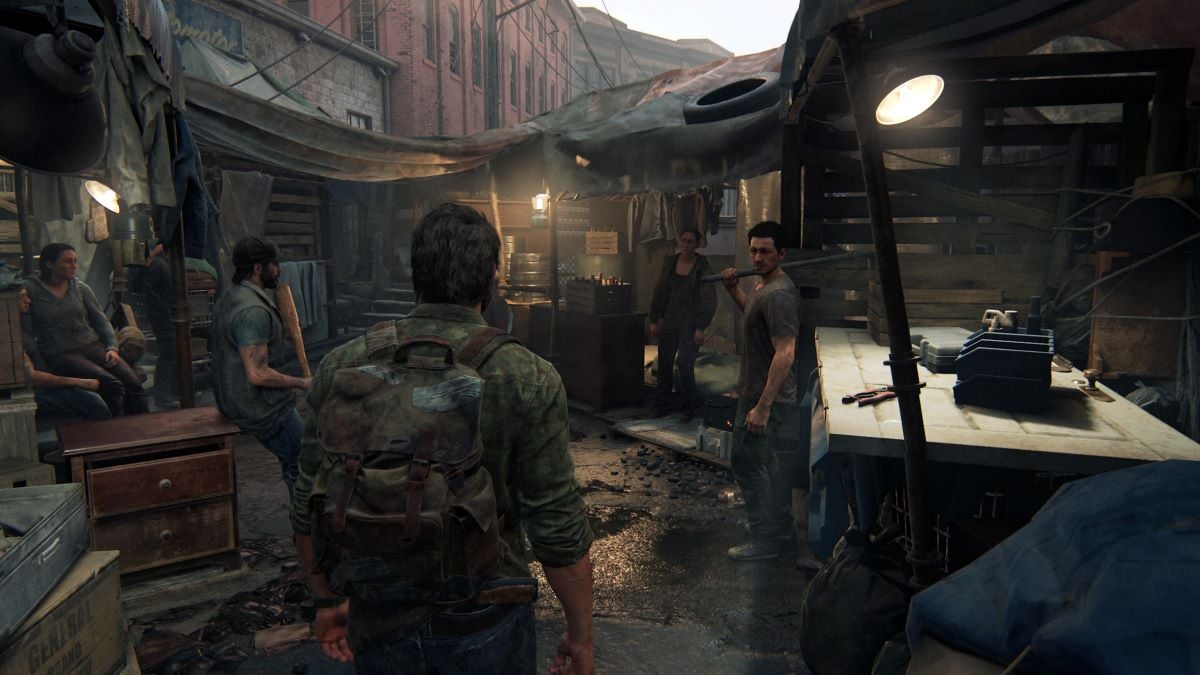
Before we get into specifics, we have to get into the excruciating first impression players will have. After downloading a hefty 80GB, you’ll be raring to get going on Joel and Ellie’s adventure. Well, hold your horses — before you do any of that, you’re strongly encouraged by the game to wait for it to finish building its shaders.
This took roughly two hours on every system I tried the game on, not to mention that the CPU-hungry process slows the entire PC down (hoovering up 7GB of RAM in the process) so you can’t do much else with it in that time. Consoles can ship with pre-compiled shaders as developers can assume fixed hardware. PC developers don’t have that luxury, with many recent games like Gotham Knights seeing brief pauses as shaders compile in-game. We can see the argument for doing all that in advance in one go before pressing start, but something is clearly very wrong with it in its current state in Part 1.
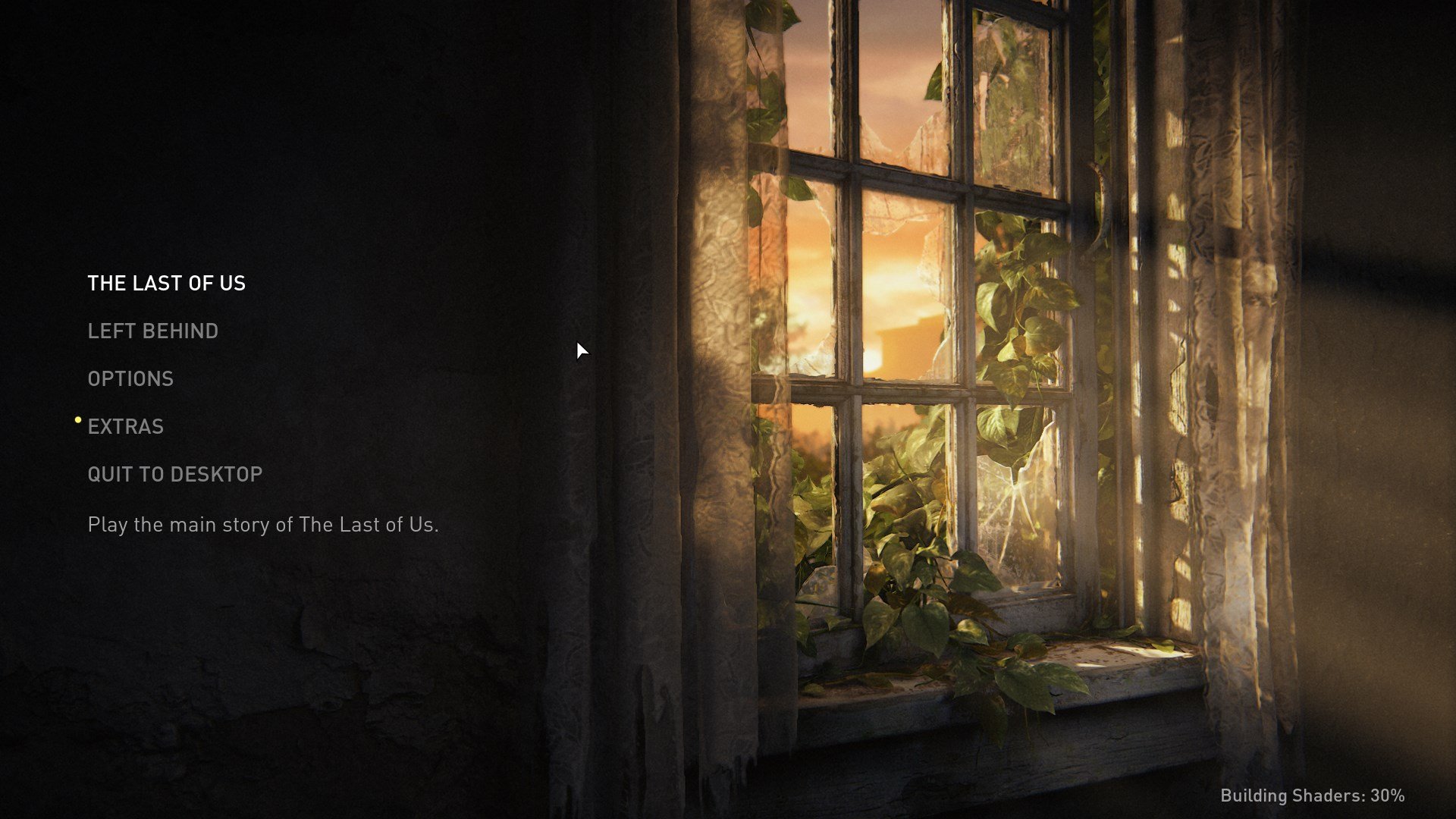
It’s also worth mentioning that building the shaders will almost certainly take you beyond the arbitrary “play” time required to refund the game on Steam, so by the time you get to pick up a controller, you’re effectively stuck with this lemon. To add insult to injury, I had to go through this whole thing twice on my primary PC, since I made the mistake of updating my graphics drivers after shaders compiled. Hang on, let me just beat my head to a pulp against this wall!
I played The Last of Us on a gaming PC (Ryzen 7 5700G, RTX 3070 Ti), a gaming laptop (11th Gen i7, RTX 3070 Laptop), and, mostly for curiosity’s sake, on my older 2016 laptop (i7-6700HQ, GTX 1060i). I didn’t get solid performance from any of them, though as you’d expect, the gaming PC provided the best experience.
It’s worth mentioning that to play this game with ultra settings at 4K, you’ll need an absolute top-of-the-line rig, as even on the RTX 3070 Ti, the game autoconfigured itself to High, dialed back a few graphical features, and settled on 1440p. On anything below that, like my gaming laptop, you’re going to struggle to hit a locked 60fps on 1080p without severe graphical cutbacks. I settled for medium settings on a locked 30, which is far below the PlayStation 5 version, but still playable.
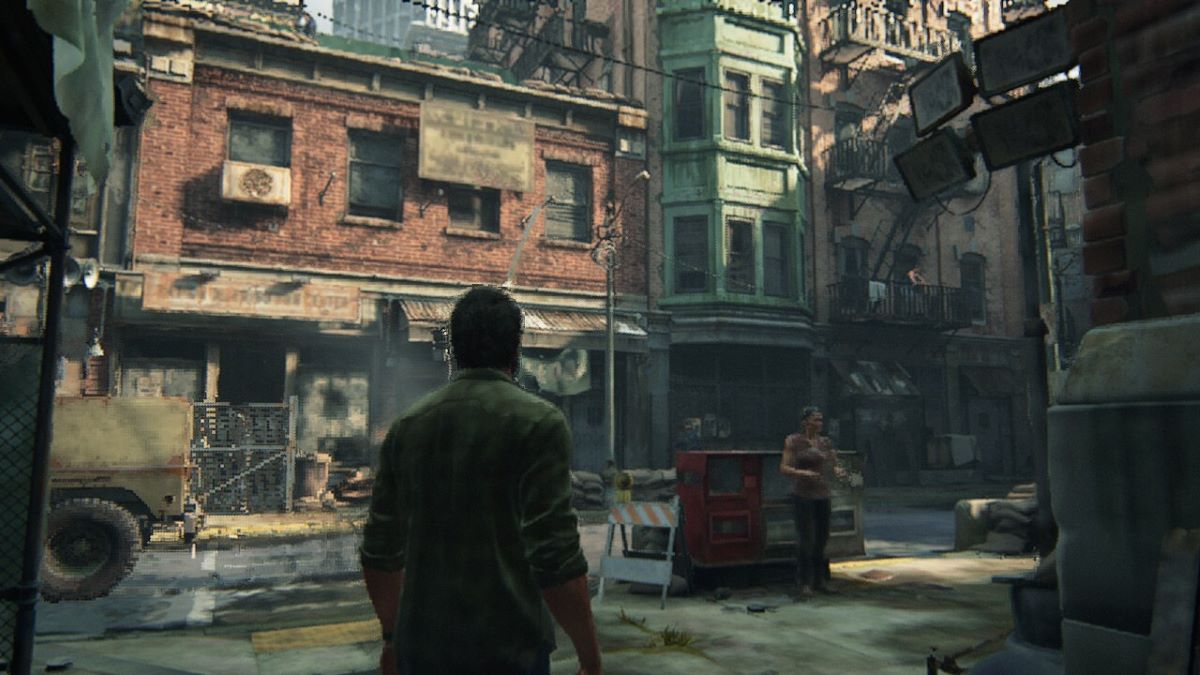
If you have any hardware below that, we wouldn’t bother. My older gaming laptop is a hair more powerful than the minimum specs listed for the game, but on low settings across the board, we had to bring the resolution down to 720p to make it even technically playable. Emphasis on “technically” there, as frame rates were in the teens and the graphics were a pixelated smeared mess.
But even on systems fully capable of running the game as it’s intended, the moment-to-moment experience pales in comparison to what’s on PlayStation 5. We experienced several random crashes, the game freezing and the audio desyncing, jittery mouse movement, level-of-detail texture bugs, weird animation glitches from NPCs, bizarrely long loading times (even on SSDs), and constant minor stutters in camera movement.
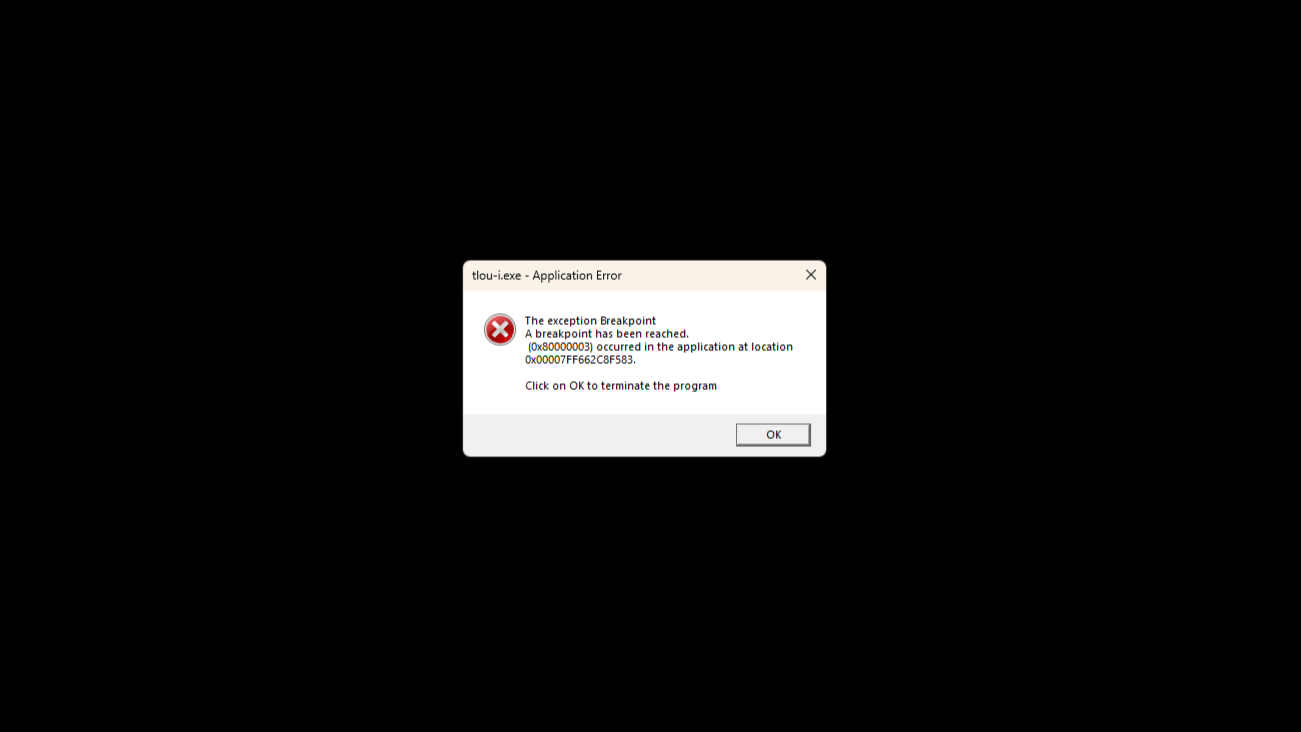
All this is simply not good enough, and it’s a long, long way from what we expect from Sony and Naughty Dog. This port seems to have been developed to some degree by Iron Galaxy, who recently worked on the amazing Metroid Prime Remastered and the Uncharted: Legacy of Thieves PC port last year. They’ve had their wobbles in the past (Arkham Knight on PC…) but are a talented studio that should have knocked this out of the park. Maybe they weren’t given the time or the resources to execute this well, but whatever the reason, the end result is just dire.
Steam Deck
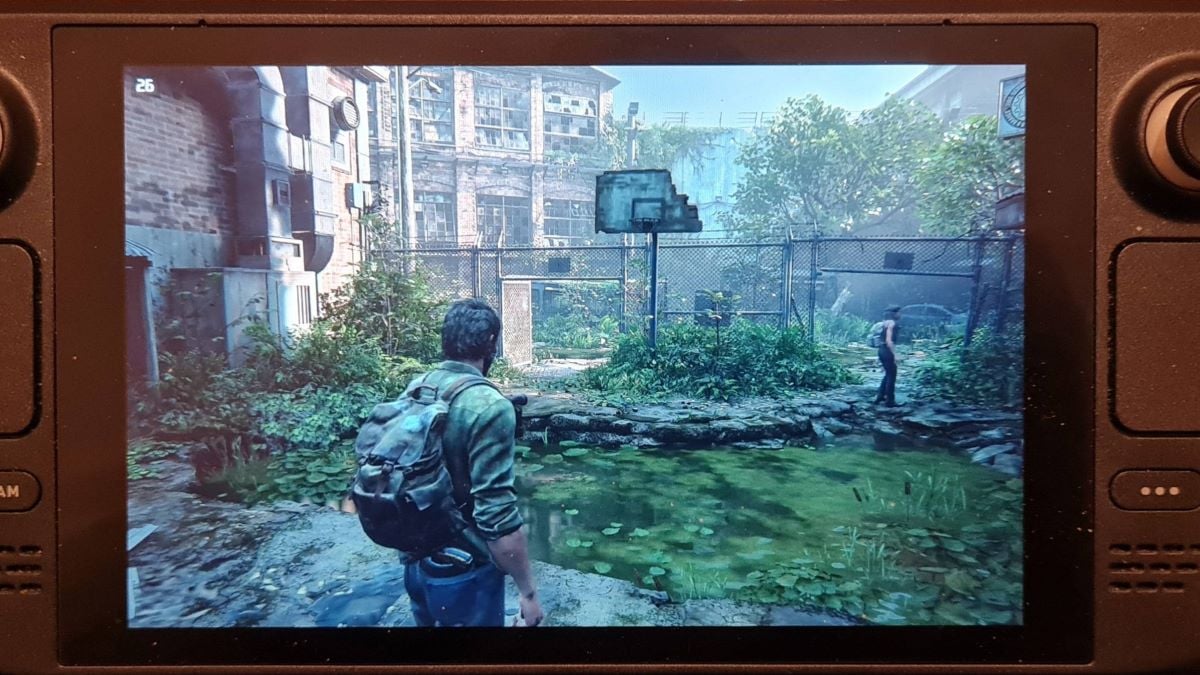
Hopes were high that this game would launch with verified on Steam Deck status, but alas it was not to be. We can at least confirm it runs on Deck, albeit with some major caveats. First up you will want to build the shaders while the Deck is plugged in, as the process will drain the battery in about an hour. This is especially annoying as the Deck is the one PC-based system where pre-compiled shaders would have worked.
Once you’re in-game, lower your expectations, as this port has Deck-specific settings that aim for 30fps on low to medium graphics. In our experience, playing through a mixture of intensive and relaxed sequences, the game lands somewhere between 20 and 30. If you’re exploring a building, it’ll come in around 30fps, but once you hit a larger environment with heavy foliage or multiple NPCs, expect it to drop to the mid to low 20s. Whether you can tolerate that is up to you. It also probably goes without saying that this is a battery hog, so expect those cooling fans to get a serious workout.
We found ourselves wishing we could just play the 2014 Remastered PlayStation 4 version on the Deck instead, as that version should be capable of hitting a locked 60fps.
All we can hope is that this port is a work-in-progress that’s going to get some substantial patches soon, and even with a truly beefy rig, there are unavoidable shortcomings compared to the PlayStation 5 version — if you can, just play that instead.
Maybe one day The Last of Us Part 1 will be a great PC port, but as of writing, it’s a crushing disappointment and a black mark on the franchise’s sterling reputation.
This review is based on the PC version of the game, using launch-day code. A copy was provided to us by Sony Interactive Entertainment.
Utter Failure
Sony has impressed with their recent PC ports, but something has gone awry with 'The Last of Us Part 1'. This is of the most highly regarded franchises in gaming, but this port is a buggy mess that crashes constantly and requires hours of set-up before playing. Avoid until major patches arrive, and even then, you should remain skeptical.
The Last of Us Part I
